
To Be or Not to Be is a 1942 American black comedy film, directed by Ernst Lubitsch, starring Carole Lombard and Jack Benny, and featuring Robert Stack, Felix Bressart, Lionel Atwill, Stanley Ridges and Sig Ruman. The plot concerns a troupe of actors in Nazi-occupied Warsaw who use their abilities at disguise and acting to fool the occupying troops. It was adapted by Lubitsch (uncredited) and Edwin Justus Mayer from the story by Melchior Lengyel. The film was released one month after actress Carole Lombard was killed in an airplane crash. In 1996, it was selected for preservation in the United States National Film Registry by the Library of Congress as being "culturally, historically, or aesthetically significant."

Stanislaus Pascal Franchot Tone was an American actor, producer, and director of stage, film and television. He was a leading man in the 1930s and early 1940s, and at the height of his career was known for his gentlemanly sophisticate roles, with supporting roles by the 1950s. His acting crossed many genres including pre-Code romantic leads to noir layered roles and World War I films. He appeared as a guest star in episodes of several golden age television series, including The Twilight Zone and The Alfred Hitchcock Hour while continuing to act and produce in the theater and movies throughout the 1960s.

Scarlet Street is a 1945 American film noir directed by Fritz Lang. The screenplay concerns two criminals who take advantage of a middle-aged painter in order to steal his artwork. The film is based on the French novel La Chienne by Georges de La Fouchardière, which had been previously dramatized on stage by André Mouëzy-Éon, and cinematically as La Chienne (1931) by director Jean Renoir.

Phantom Lady is a 1944 American film noir directed by Robert Siodmak and starring Franchot Tone, Ella Raines, and Alan Curtis. Based on the novel of the same name by Cornell Woolrich, it follows a young Manhattan secretary and her endeavors to prove that her boss did not murder his wife.

Francis Bosley Crowther Jr. was an American journalist, writer, and film critic for The New York Times for 27 years. His work helped shape the careers of many actors, directors and screenwriters, though his reviews were criticized as unnecessarily harsh. Crowther was an advocate of foreign-language films in the 1950s and 1960s, particularly those of Roberto Rossellini, Vittorio De Sica, Ingmar Bergman, and Federico Fellini.

Flamingo Road is a 1949 American film noir drama directed by Michael Curtiz and starring Joan Crawford, Zachary Scott, Sydney Greenstreet and David Brian. The screenplay by Robert Wilder was based on a 1946 play written by Wilder and his wife, Sally, which was based on Robert Wilder's 1942 novel of the same name.
Jay Dratler was an American screenwriter and novelist.
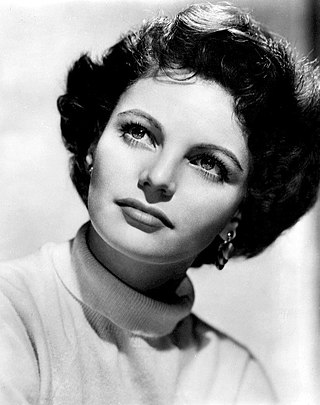
Geraldine Brooks was an American actress whose three-decade career on stage as well as in films and on television was noted with nominations for an Emmy in 1962 and a Tony in 1970. She was married to author Budd Schulberg.

Jigsaw is a 1949 American film noir crime drama directed by Fletcher Markle starring Franchot Tone, Jean Wallace and Marc Lawrence. The feature was produced by the Danziger Brothers, Edward J. Danziger and Harry Lee Danziger, from a screenplay by Vincent McConnor and Fletcher Markle, based on a story by John Roeburt.

Man Hunt is a 1941 American political thriller film, directed by Fritz Lang and starring Walter Pidgeon and Joan Bennett. It is based on the 1939 novel Rogue Male by Geoffrey Household and is set in Europe just prior to the Second World War. Lang had fled Germany into exile in 1933 and this was the first of his four anti-Nazi films, which include Ministry of Fear, Hangmen Also Die!, and Cloak and Dagger. It was Roddy McDowall's first Hollywood film after escaping London following the Blitz. Man Hunt was one of many films released in 1941 that were considered so pro-British that they influenced neutral members of the U.S. public to sympathize with the British side in World War II.
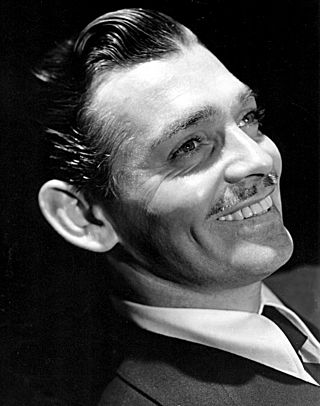
Clark Gable (1901–1960) was an American actor and producer who appeared in over 70 feature films and several short films. Gable first began acting in stage productions, before his film debut in 1924. After many minor roles, Gable landed a leading role in 1931, subsequently becoming one of the most dominant leading men in Hollywood. He often acted alongside re-occurring leading ladies: six films with Jean Harlow, seven with Myrna Loy, and eight with Joan Crawford, among many others.

Joan of Paris is a 1942 war film about five Royal Air Force pilots shot down over Nazi-occupied France during World War II and their attempt to escape to England. It stars Michèle Morgan and Paul Henreid, with Thomas Mitchell, Laird Cregar and May Robson in her last role.

This Above All is a 1942 American romance film directed by Anatole Litvak and starring Tyrone Power and Joan Fontaine as a couple from different social classes who fall in love in wartime England. The supporting cast features Thomas Mitchell, Nigel Bruce, and Gladys Cooper. Set in World War II, the film is adapted from Eric Knight's 1941 novel of the same name.
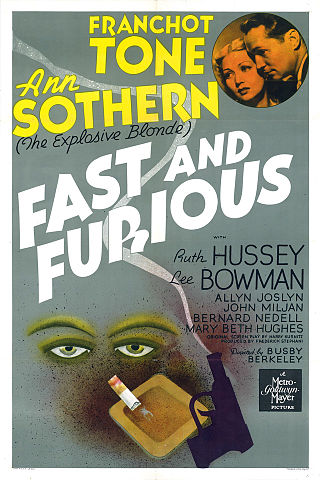
Fast and Furious is a 1939 American mystery comedy film directed by Busby Berkeley. The film stars Franchot Tone and Ann Sothern as Joel and Garda Sloane, a crime-solving married couple who are also rare book dealers. It is the last of a Metro-Goldwyn-Mayer trilogy, along with Fast Company (1938) and Fast and Loose (1939). However, different actors played the couple each time.

The Man I Married is an American 1940 drama film starring Joan Bennett, Francis Lederer, Lloyd Nolan and Anna Sten.
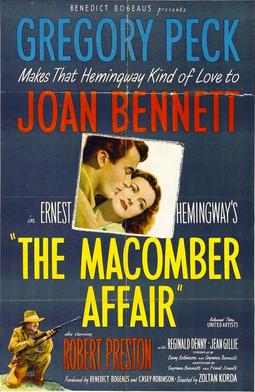
The Macomber Affair is a 1947 American adventure drama film starring Gregory Peck, Joan Bennett, and Robert Preston. Directed by Zoltan Korda and distributed by United Artists, it portrays a fatal love triangle set in British East Africa between a frustrated wife, a weak husband, and the professional hunter who comes between them.
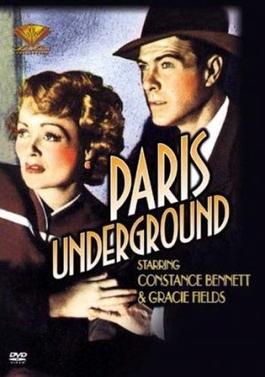
Paris Underground, also known as Madame Pimpernel, is a 1945 film directed by Gregory Ratoff, and based on the memoir of the same title by Etta Shiber.
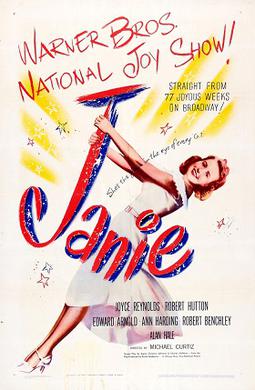
Janie is a 1944 film directed by Michael Curtiz, based on a 1942 Broadway play by Josephine Bentham and Herschel V. Williams Jr. The play was adapted from Bentham's 1940 novel by the same name.

So Ends Our Night is a 1941 drama directed by John Cromwell and starring Fredric March, Margaret Sullavan and Glenn Ford. The screenplay was adapted by Talbot Jennings from the novel Flotsam by German exile Erich Maria Remarque, who rose to international fame for his first novel, All Quiet on the Western Front.
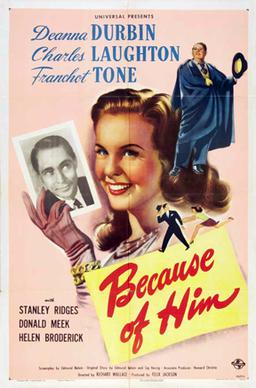
Because of Him is a 1946 American romantic comedy film directed by Richard Wallace and starring Deanna Durbin, Charles Laughton and Franchot Tone.



















